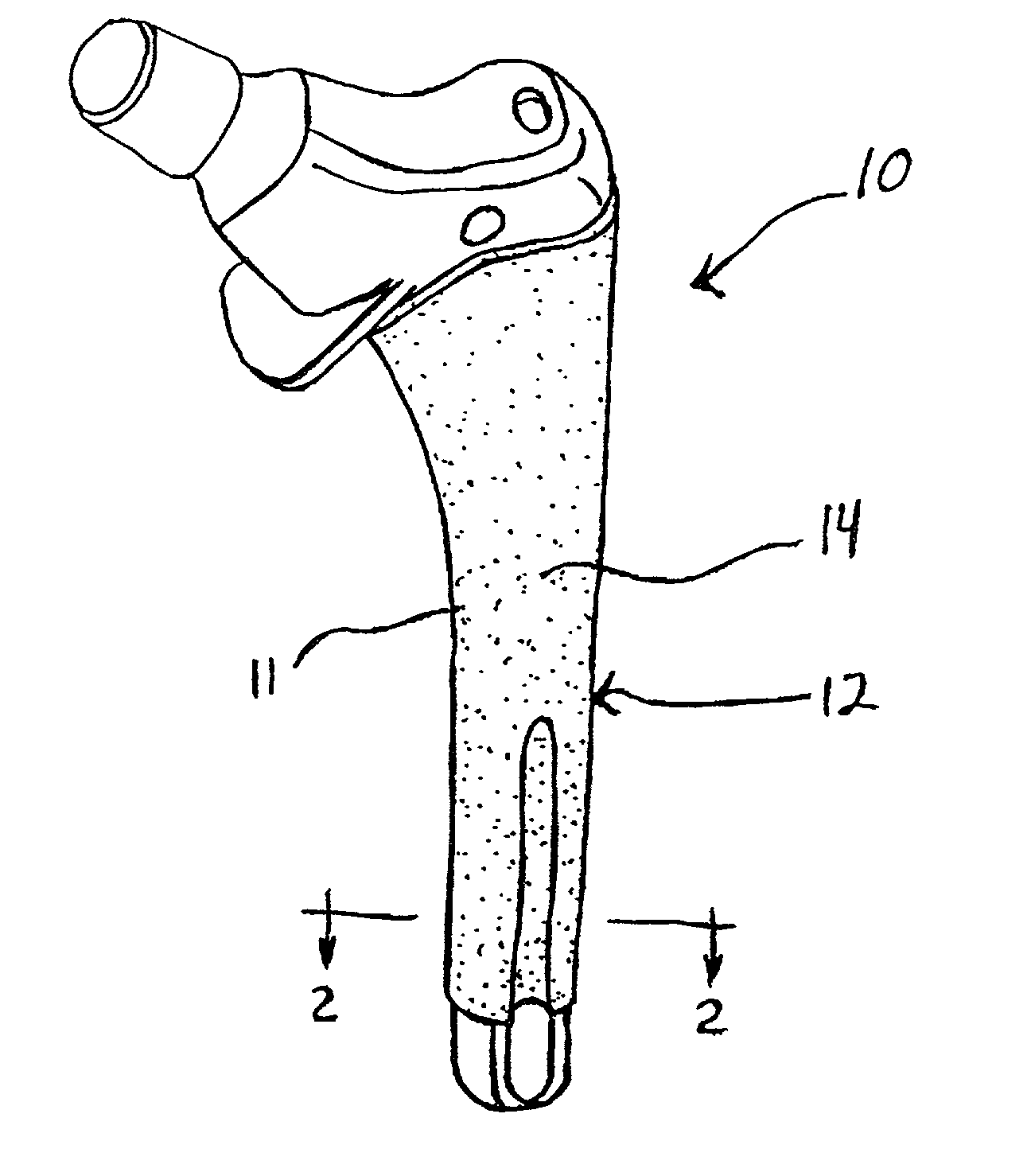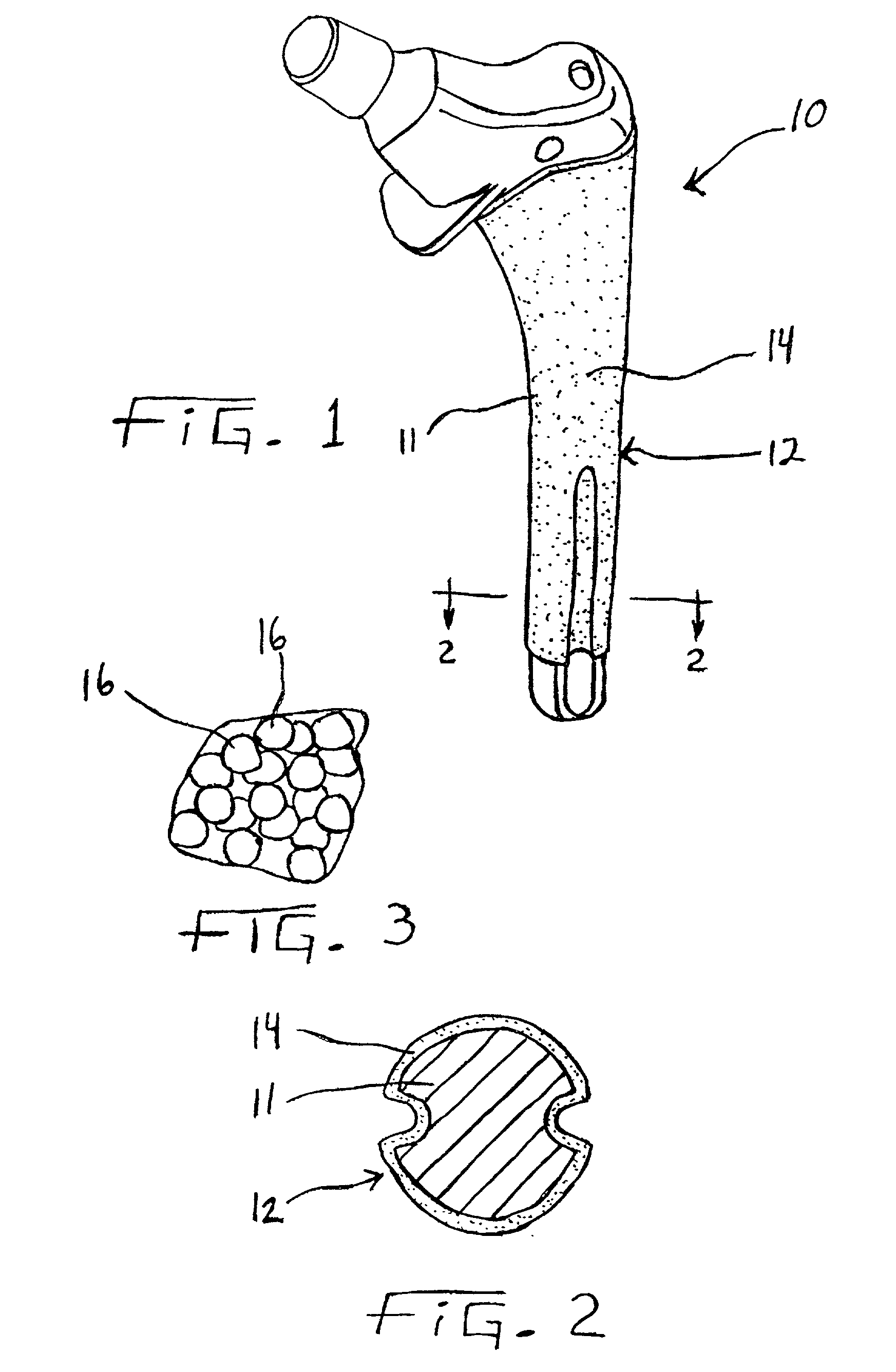Enhanced fatigue strength orthopaedic implant with porous coating and method of making same
a technology of orthopaedic implants and porous coatings, which is applied in the field of prosthetic implants, can solve problems such as crack formation and reduce and achieve the effect of reducing the fatigue strength of implants and contributing to crack formation
- Summary
- Abstract
- Description
- Claims
- Application Information
AI Technical Summary
Benefits of technology
Problems solved by technology
Method used
Image
Examples
Embodiment Construction
.) produces a significant improvement as was discussed in conjunction with Table I It has been found that aging after bead bonding (Example 3.) results in an additive fatigue strength improvement. Finally, performing the sintering at a reduced temperature by incorporating a melting point lowering substance plus nitrogen diffusion hardening (Example 4.), as was discussed in conjunction with Table II, also produces an additive effect. It is believed that any of these processes can be used separately or in combination to improve the fatigue strength of cobalt-chromium-molybdenum alloy implants and that when used in combination they will have an additive effect.
[0049] It can be appreciated that the aging process can be useful for applications such as dental implants in addition to orthopaedic implants to improve the fatigue strength thereof Additionally, the aging process can be used for both cast as well as forged alloys.
3TABLE III Fatigue Properties of Bead Coated High Carbon Co--Cr--...
PUM
| Property | Measurement | Unit |
|---|---|---|
| fatigue strength | aaaaa | aaaaa |
| temperature | aaaaa | aaaaa |
| temperature | aaaaa | aaaaa |
Abstract
Description
Claims
Application Information
 Login to View More
Login to View More - R&D
- Intellectual Property
- Life Sciences
- Materials
- Tech Scout
- Unparalleled Data Quality
- Higher Quality Content
- 60% Fewer Hallucinations
Browse by: Latest US Patents, China's latest patents, Technical Efficacy Thesaurus, Application Domain, Technology Topic, Popular Technical Reports.
© 2025 PatSnap. All rights reserved.Legal|Privacy policy|Modern Slavery Act Transparency Statement|Sitemap|About US| Contact US: help@patsnap.com


